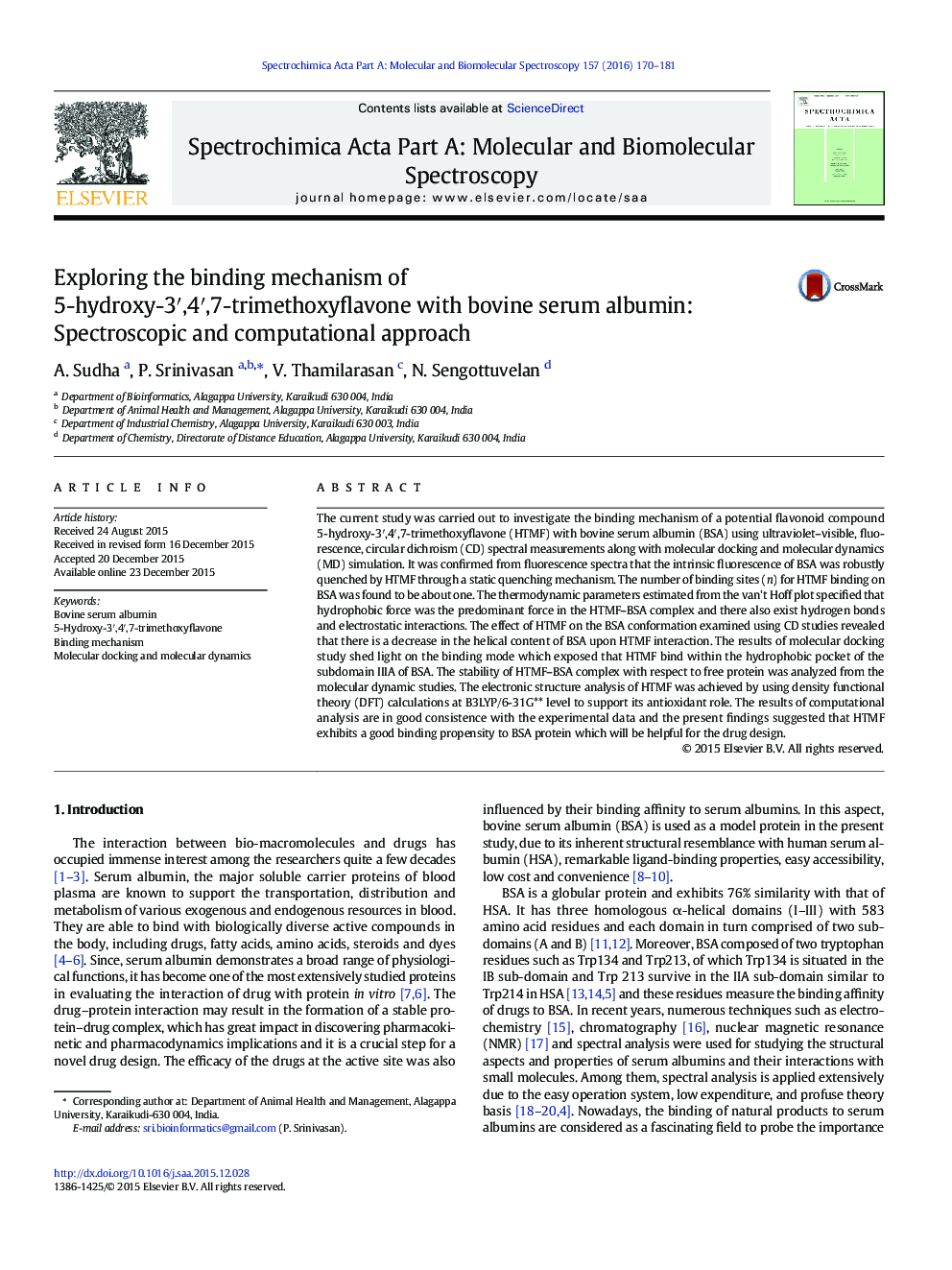| کد مقاله | کد نشریه | سال انتشار | مقاله انگلیسی | نسخه تمام متن |
|---|---|---|---|---|
| 1229332 | 1495212 | 2016 | 12 صفحه PDF | دانلود رایگان |

• The interaction between BSA and HTMF was studied by various spectroscopic and computational methods.
• HTMF quenches the fluorescence of BSA via static quenching mechanism.
• The occurrence of hydrophobic interactions is evidenced by the positive value of ΔS.
• HTMF molecule binds to the subdomain IIIA (site II) of BSA interacting to the Leu429 and Lys413 residues.
• DFT calculations of HTMF molecule are carried out.
The current study was carried out to investigate the binding mechanism of a potential flavonoid compound 5-hydroxy-3′,4′,7-trimethoxyflavone (HTMF) with bovine serum albumin (BSA) using ultraviolet–visible, fluorescence, circular dichroism (CD) spectral measurements along with molecular docking and molecular dynamics (MD) simulation. It was confirmed from fluorescence spectra that the intrinsic fluorescence of BSA was robustly quenched by HTMF through a static quenching mechanism. The number of binding sites (n) for HTMF binding on BSA was found to be about one. The thermodynamic parameters estimated from the van't Hoff plot specified that hydrophobic force was the predominant force in the HTMF–BSA complex and there also exist hydrogen bonds and electrostatic interactions. The effect of HTMF on the BSA conformation examined using CD studies revealed that there is a decrease in the helical content of BSA upon HTMF interaction. The results of molecular docking study shed light on the binding mode which exposed that HTMF bind within the hydrophobic pocket of the subdomain IIIA of BSA. The stability of HTMF–BSA complex with respect to free protein was analyzed from the molecular dynamic studies. The electronic structure analysis of HTMF was achieved by using density functional theory (DFT) calculations at B3LYP/6-31G** level to support its antioxidant role. The results of computational analysis are in good consistence with the experimental data and the present findings suggested that HTMF exhibits a good binding propensity to BSA protein which will be helpful for the drug design.
Figure optionsDownload as PowerPoint slide
Journal: Spectrochimica Acta Part A: Molecular and Biomolecular Spectroscopy - Volume 157, 15 March 2016, Pages 170–181